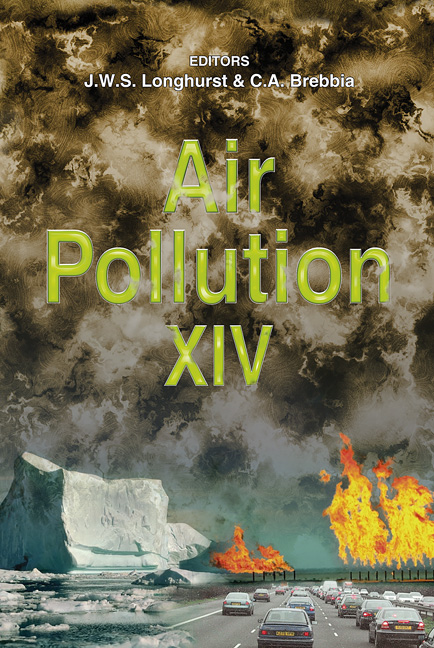Dispersion Through An Obstacle Array: A Wind Tunnel Investigation
Price
Free (open access)
Transaction
Volume
86
Pages
10
Published
2006
Size
448 kb
Paper DOI
10.2495/AIR060611
Copyright
WIT Press
Author(s)
V. Garbero, P. Mejan, R. Perkins, P. Salizzoni & L. Soulhac
Abstract
In order to study flow and dispersion of a passive scalar through a group of obstacles, we performed wind tunnel experiments in a neutrally stratified boundary layer. The aim of the study was to evaluate the influence of obstacle geometry and of wind direction on the spreading of a passive scalar plume. An idealized urban neighborhood was simulated by means of an array of aligned blocks, whose height H was approximately 1/16 of the simulated boundary layer depth; the width and the length of each block were 5H. The pollutant source was placed at height H/2 within the array. Flow-field and mean concentration data were obtained for different wind directions, which varied from 0 to 45◦, and for different spacing between the obstacles, which varied from H to 2H; all measurements were performed within and above the obstacle array. Measurements of concentration have been examined in order to evaluate the mass exchange processes and their dependence to the wind orientation. Our goal was to verify the extent of the applicability of a simple analytical model in rather complex geometries. Keywords: atmospheric dispersion, urban pollution, obstacle array, flow field. 1 Introduction The study of plume dispersion in urban environment, because of its complexity, is not generally solvable by computational means and so it has been conducted by using physical models in wind tunnel or field experiments. Investigations are usually focused on dispersion through idealized arrays of simple patterns, in order to facilitate a general understanding of the overall plume behaviour and its dependence by the most relevant parameters (Britter and Hanna [1]).
Keywords
atmospheric dispersion, urban pollution, obstacle array, flow field.





